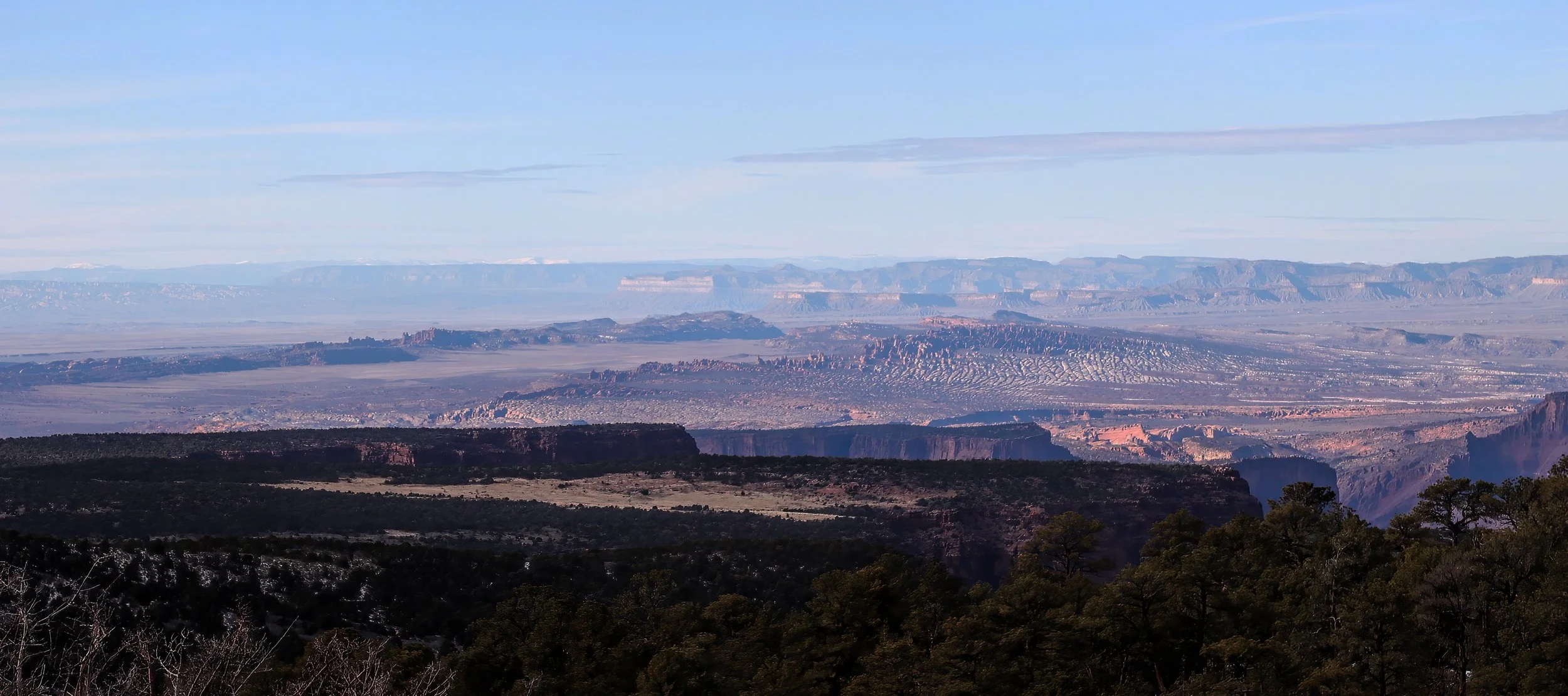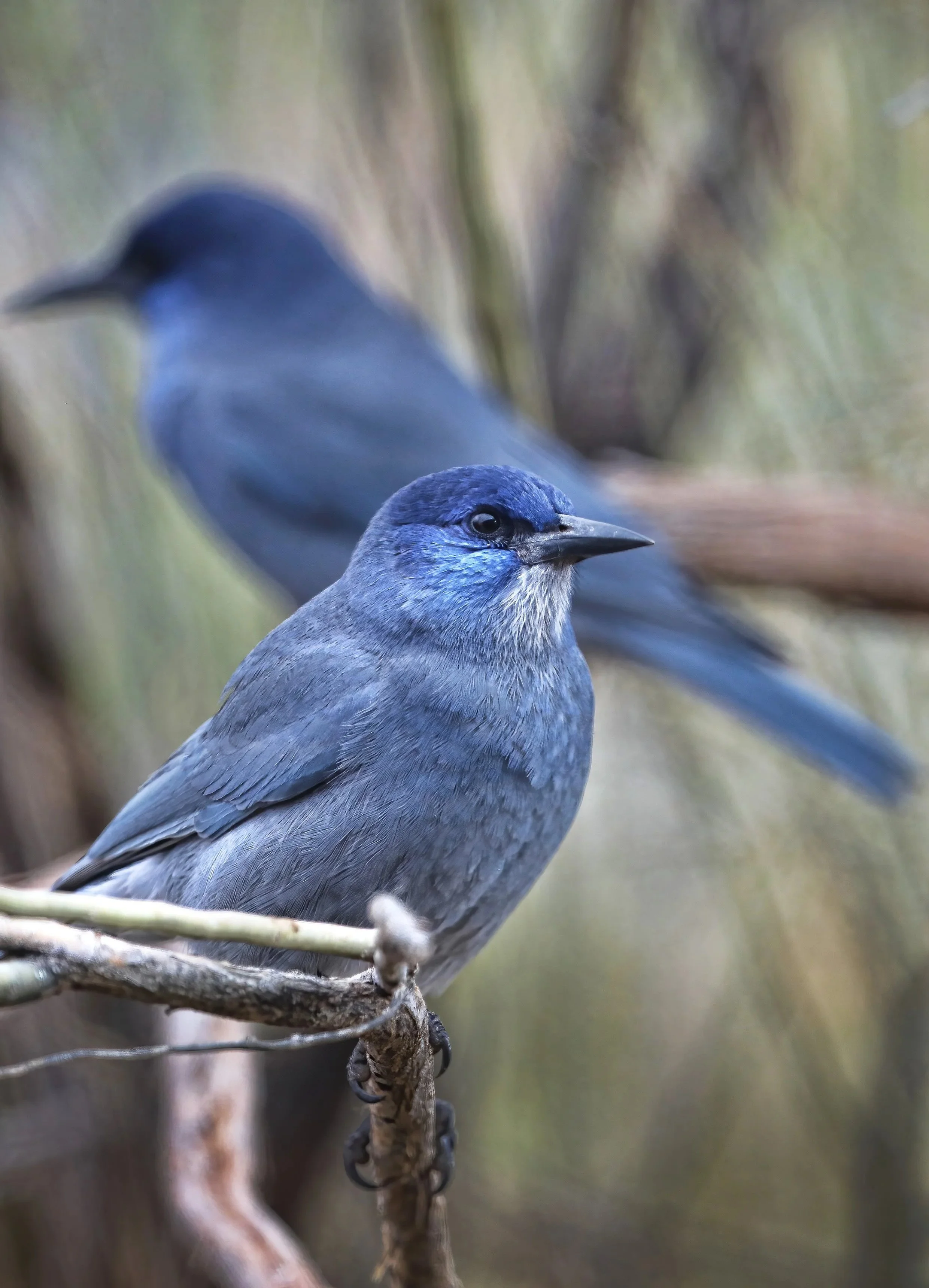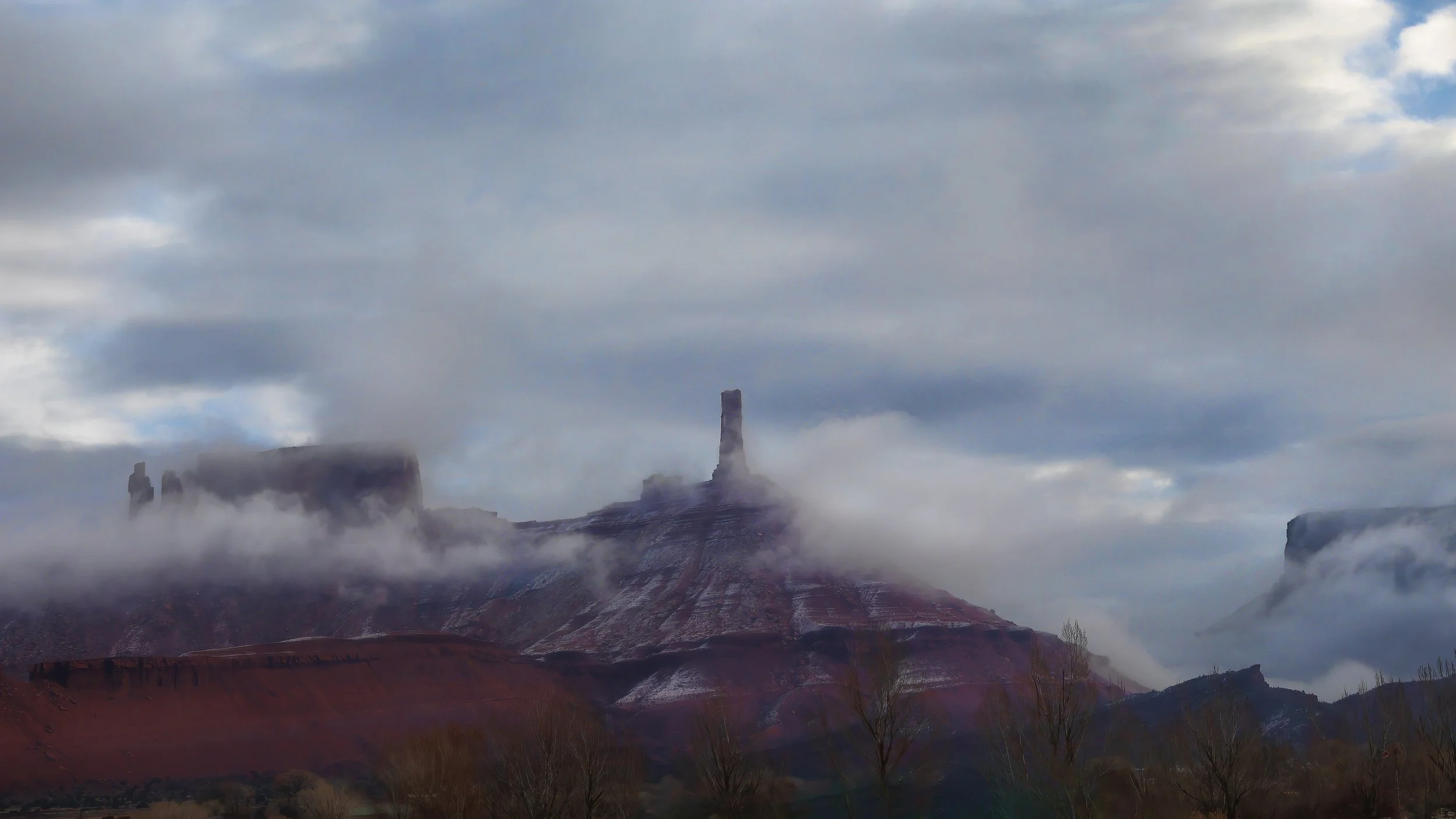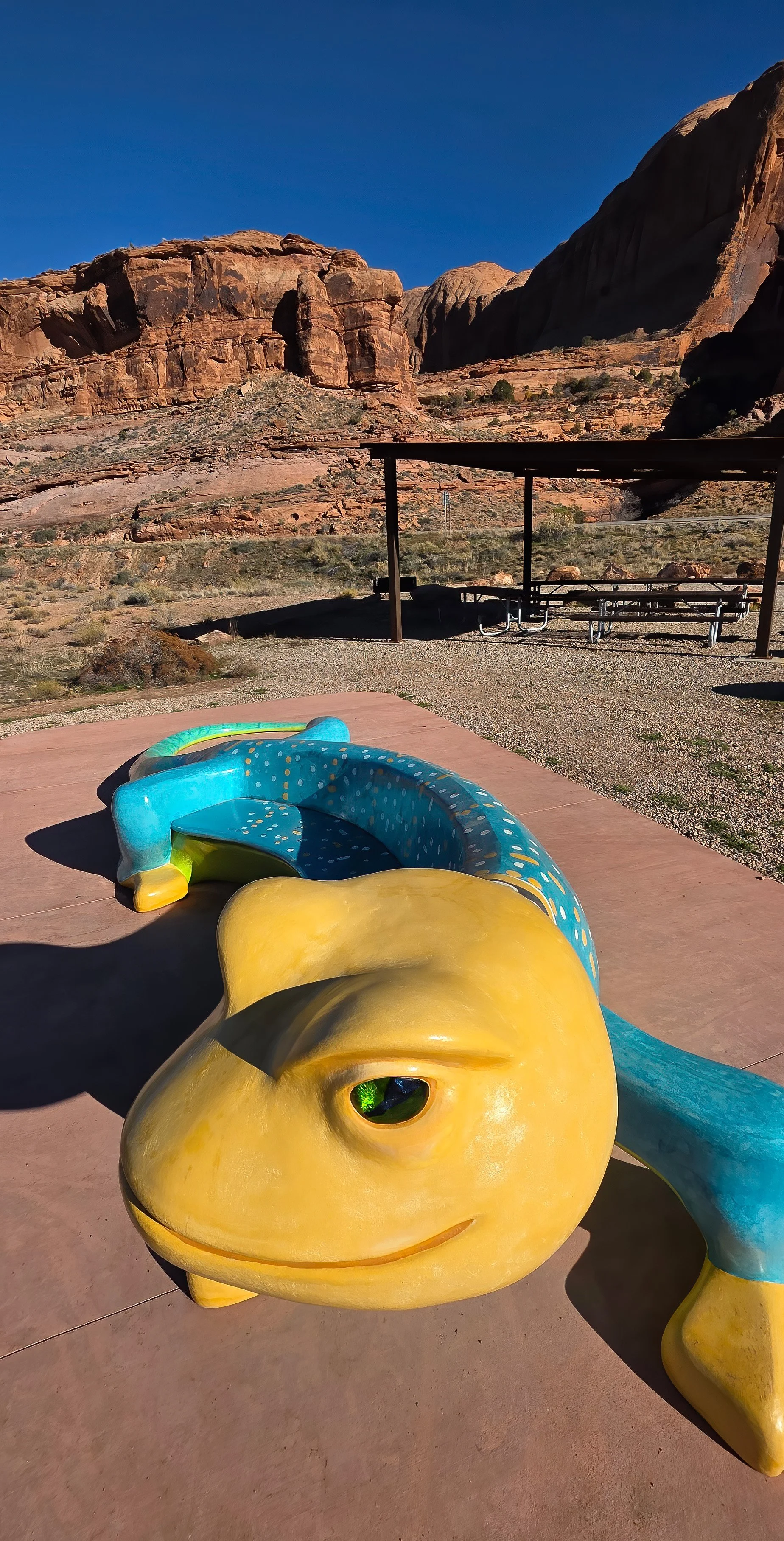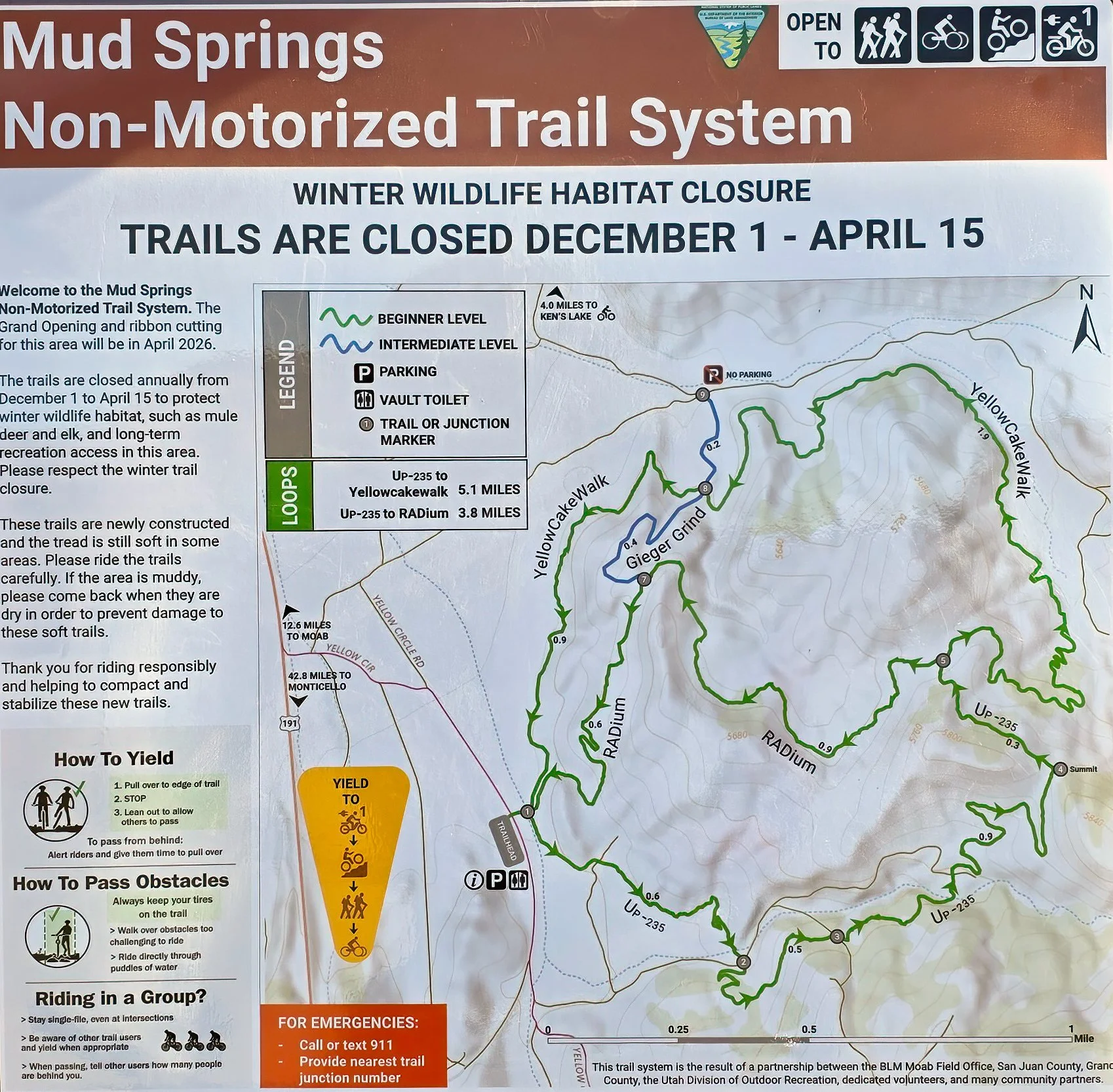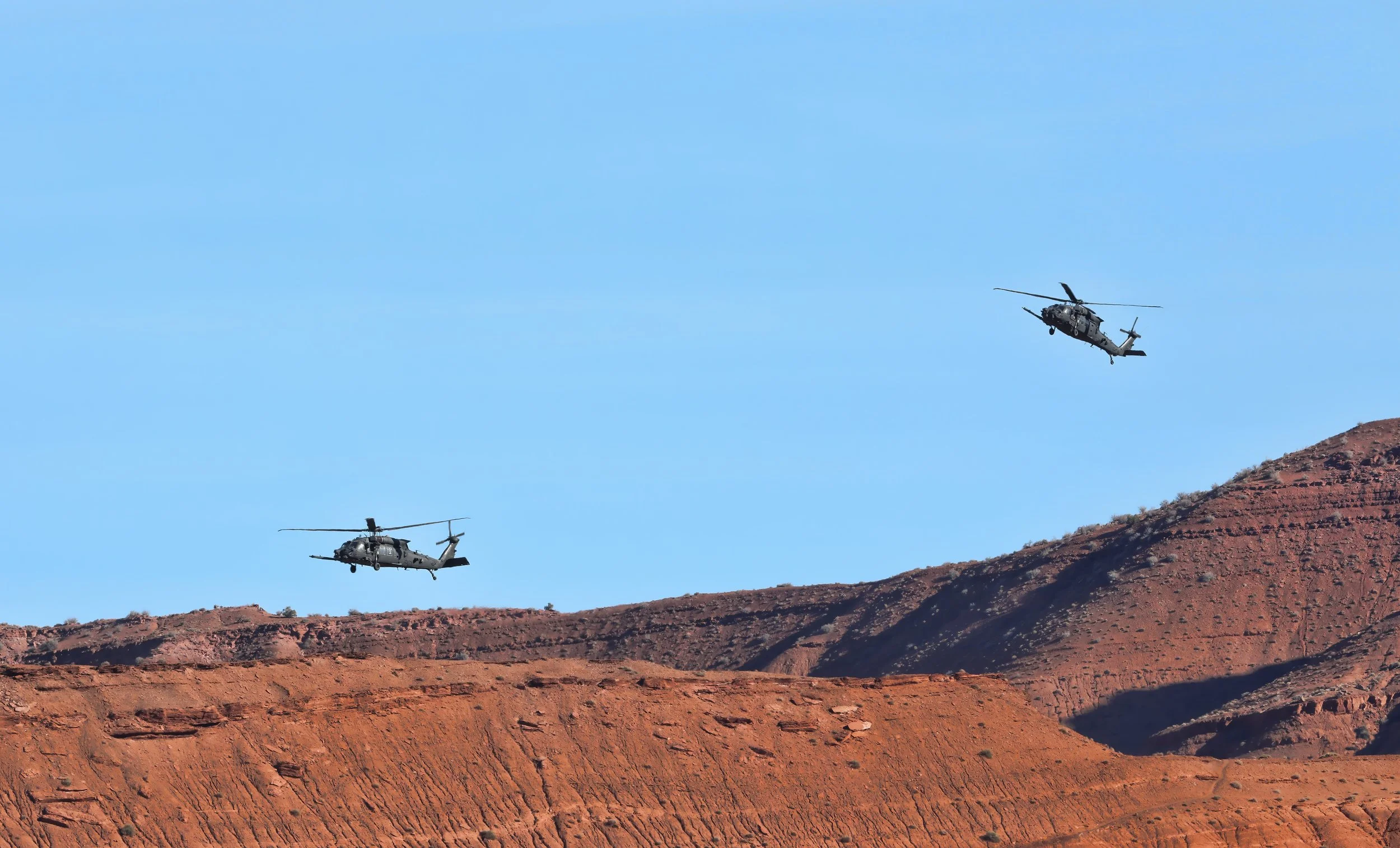displayed on a bedding plane on a fallen slab from the Chinle Formation (Upper Triassic (237-201.3Ma)) near Courthouse Wash. This sedimentary structure formed as muddy sediment dried and contracted due to reduction in water content, then buried and preserved with sandy sediments from a subsequent flood event.
The Henrys on the horizon...
as seen from a lofty perch above Castleton on a clear and cold early winter day.
The Henry Mountains, 90 miles (145 km) distant. From left to right (south to north): Mount Hillers (10,741 ft (3,274 m)), Mount Pennell (11,413 ft (3,479 m)) and Mount Ellen (11,527 ft (3,513 m)).
The collapsed salt-cored anticline in the heart of Arches National Park, 25 miles (40 km) distant. The Book Cliffs are 39 miles (63 km) distant.
A flying predatory Cyclops...
spies a potential target this morning.
Cooper's Hawk (Astur cooperii).
Midday light on Round Mountain...
illuminates the conical landform like a mural painting.
Click on image to supersize.
A band of screeching Pinyon Jays...
has assaulted the feeding stations, numbering nearly 100 voracious individuals. Here are just a couple.
Pinyon Jay (Gymnorhinus cyanocephalus).
The Tower briefly emerges...
and then becomes obscured by low clouds as the latest early winter storm slowly passes, the first of which that dropped snow flurries on the valley this season. Meanwhile, the high country is off to a good start, sitting at 100% median snow water equivalent for this point in the water year.
Time series plot of snow water equivalent for the Lasal Mountain SNOTEL site.
All fluffed up...
with its winter coat on in response to the first hard freeze overnight as it stakes out the feeding stations the following morning.
Juvenile Cooper’s Hawk (Astur cooperii).
A window into the Paradox Formation...
is found in Onion Creek where the peculiar geology of the salt-dominated formation is on full display. The light-colored gypsum caprock is highly structurally distorted, demonstrating the plastic nature of the buoyant salt body as it rises and displaces other clastic rocks in the geologic section.
View eastward, across the Onion Creek diapir. The Paradox Formation (Middle Pennsylvanian (315.2Ma - 307Ma)) is the light-colored unit in contact with the red beds of the Cutler Formation (Lower Permian (298.9Ma - 273.01Ma)).
An uncommon collared lizard...
of enormous proportions has appeared at the Colorado Riverway Information pullout near Goose Island Campground. Fun!
A handsome hawk sits for its portrait...
in the bright sun, presenting perfectly posed profiles to the camera this afternoon. It’s also quickly becoming tolerant of my close by presence.
Juvenile Cooper's Hawk (Astur cooperii).
With focused determination...
this patiently perched raptor isn’t leaving without breakfast. This handsome bird is now a near daily sighting around the feeding stations.
Juvenile Cooper's Hawk (Astur cooperii).
Snow line sits at about 8,000 feet...
in the La Sal Mountains following several days of unsettled weather. About a half-inch (13 mm) of rain fell mid-valley at lower elevation.
Late afternoon atmospherics at Round Mountain.
A high elevation skift of snow...
still allows for zooming the trails lower in the valley the day after the storm. Winter approaches.
Behind the Rocks is softly lit...
in the distance this morning, the sandstone fins in the strongly-jointed terrain catching some filtered rays of sunshine under unsettled weather. The image below was captured during the ascent of Long Canyon early in the day.
Having fun with the new Bronco in Long Canyon.
A sky full of cotton balls...
signals an incoming change in the weather with some moisture arriving late in the weekend.
Click on image to enlarginate.
An early morning shower...
is being enjoyed in the bird bath. Unfortunately this opportunity won’t last much longer as the irrigation system is being winterized tomorrow.
Western Meadowlark (Sturnella neglecta).
Despite the unalluring name...
that lacks curb appeal, the Mud Springs Non-Motorized Trail System is the newest mountain biking area south of Moab and it is HUGE fun. I explored about nine miles (~14 km) today during its “soft opening” prior to a winter closure that commences 1 December 2025. It’s brilliantly designed and expertly constructed with lots of downhill flowy sections with banked/bermed corners where experienced riders can carry speed through the turns. Once again, it’s enormous fun!
Scenic view from the top of the trail system. (Click on image to embiggen.)
Look who's lurking...
near the feeding stations this morning, waiting patiently to grab brunch.
Juvenile Cooper's Hawk (Astur cooperii).
UPDATE: The following morning, with the Sun at its back, hunting for breakfast.
Two Blackhawk helicopters on maneuvers...
over Castle Valley this quiet early morning, landing multiple times on Castleton Road over several hours time, shattering the Sunday morning silence in the valley with tremendous noise and reverberations off canyon walls. No search and rescue is underway, so why all the disruptive commotion?!
UPDATE: Aerial operations have continued each of the last several days. Low and slow, it’s quite annoying.
The metallic remains of Dewey Bridge...
still span the Colorado River, the connective tissue of a historic suspension bridge that burned in 2008 by a youngster playing with matches. Built in 1916, it was the longest suspension bridge in Utah and second longest west of the Mississippi River. A tragic historical loss.
Read all about it in The Canyon Country Zephyr (2021): Dewey Bridge - its History & Fiery Demise.


